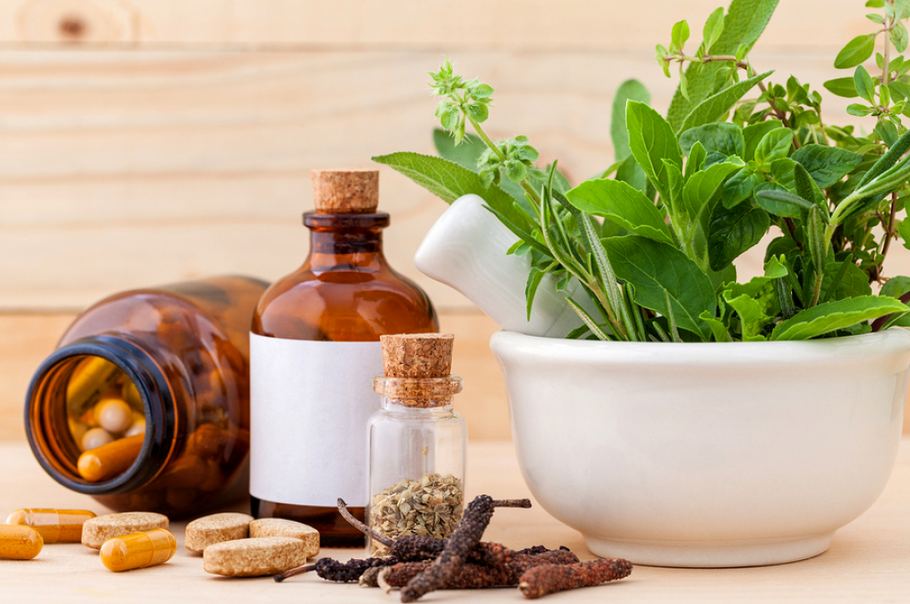 It’s officially flu season – if you haven’t been affected by the flu or the common cold, you probably know someone who has. With the different natural remedies & prescription drugs offered, it’s getting hard to tell what really works. Luckily, Dr. Richard Nahas and Dr. Agneta Balla, backed up by a whole lot of medical research, have come up with the following conclusions for natural remedies in treating the common cold.
It’s officially flu season – if you haven’t been affected by the flu or the common cold, you probably know someone who has. With the different natural remedies & prescription drugs offered, it’s getting hard to tell what really works. Luckily, Dr. Richard Nahas and Dr. Agneta Balla, backed up by a whole lot of medical research, have come up with the following conclusions for natural remedies in treating the common cold.
The following 6 remedies were tested for prevention and treatment; Echinacea, garlic, ginseng, probiotics, vitamin C, and zinc… and the findings were mostly hopeful! Here’s the rundown:
Echinacea
Used largely by First Nations people & a growing popularity in Europe, echinacea roots & flowers have been used for several infectious problems. Clinical trials have found more evidence for treatment and prevention of the common cold in Echinacea purpurea than Echinacea augstifolia or Echinacea pallida, and more for aerial parts than roots! There’s moderate evidence that Echinacea purpurea might be effective for treatment of the common cold, but issues surrounding dose require clarification before it can be recommended for routine use. A typical dose is 6-9 mL of pressed juice, or 0.75 to 1.5 mL of tincture per day. Just make sure that you aren’t allergic to it as it is a member of the Asteraceae family.
Ginseng
Ginseng has been used in Chinese medicine for ages. It is believed to be an “adaptogen’ which enhances an individual’s ability to resist mental and physical stress. Although packed with benefits for the ability to stimulate the mind, reduce stress, prevent aging, increase sexual potency, help with weight loss efforts, manage diabetes, boost hair health, and the list goes on, there are no trials evaluating its effectiveness in treating the common cold. There is conflicting and unclear evidence that ginseng prevents cold therefore additional research is required.
Vitamin C
One trial found that patients who took 8 g of vitamin C at the onset of symptoms had more “short colds” of less than a day than those who took 4 g. Taking at least 1 g of vitamin C per day can be recommended for the prevention of colds based on good evidence of moderate reduction in symptom duration in adult and children. While it only reduces symptoms by 1 to 2 days, it is cheap, safe, and simple to use. It can also be recommended for use by athletes in intense training. Further research is needed to explore the potential benefit in Canadians, who are subjected to cold winters.
Allicin
Allicin is released when garlic is chopped or chewed, but becomes inactive when cooked. It has demonstrated antiviral properties in several virus strains. One study showed a 64% decrease in colds when allicin extract was taken at a high-dose (180 mg daily for 12 weeks), and symptom duration reduction by 70%! It’s important to note, however, that a fresh garlic clove only contains 5-9 mg of allicin & not enough is known about the safety of high-dose allicin. The only known negative side effect to date is… well you guessed it… garlic breath!
Probiotics
Many health benefits of probiotics have been suggested in recent years – mostly due to the presence of probiotic bacteria, which appear to be useful in several gastrointestinal and immune-mediate disorders. They essentially interfere with toxin and cell binding sites, and improve mucosal barrier function, intestinal microflora, and gut-associated lymphoid tissue. Although probiotics make your gut a little happier, there is currently no evidence in treating the common cold, and no major evidence in preventing it either. Antibiotics, despite their lack of efficacy and potential for harm, are still prescribed to patients with the common cold. These drugs alter intestinal flora permanently, which can lead to potentially harmful side effects and complications. So we recommend that patients use probiotics whenever an antibiotic is prescribed!
Zinc Lozenges:
This essential mineral is used in hundreds of biochemical pathways, and its deficiency has long been associated with infection risk. When tested, zinc lozenges reduced symptom duration and severity – but this varies depending on its bioavailability. When looking for zinc lozenges, try to find some that don’t include citric or tartaric acid, sorbitol, or mannitol – all of which bind to and inactivate zinc, reducing its effectiveness. Ingredients such as acetate or gluconate don’t seem to reduce effectiveness, so opt for a brand that contain those instead.
In conclusion, the most consistent evidence supports the use of at least 1 g of vitamin C per day, which decreased symptom duration by 8% in adults and 18% in children in several trials. Use of ginseng and allicin can be considered; both show promise but larger trials are needed. For treatment, Echinacea purpurea might reduce duration and severity of symptoms when taken at the first signs of a cold. Zinc lozenges might also be effective, but once again more trials are needed.
These simple, safe recommendations might improve outcomes for patients with the common cold. Of equal importance, they offer an alternative when advising patients whose viral infections do not require antibiotics.
Read the full research article here: http://www.cfp.ca/content/57/1/31.short
